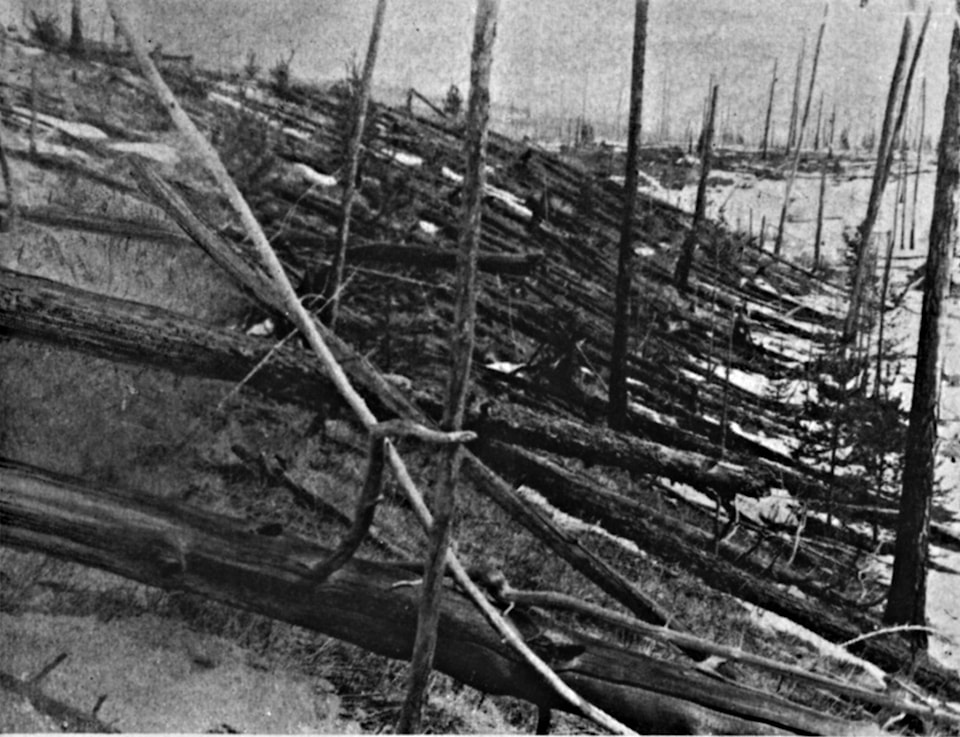By Samantha Bell
Although there are no major meteor showers in June, it’s worth keeping an eye out for sporadic meteors. On a dark night from a dark location you can some times see up to six in an hour or two. Speaking of objects falling to Earth…
June 30 is Asteroid Day
This is a day of education to help protect Earth from asteroids, newly recognized by the United Nations and founded in December 2014 by Dr. Brian May (astrophysicist and guitar player for the rock band Queen), Danica Remy (COO of the B612 Foundation), Grigorij Richters (director of 51 Degrees North), and Rusty Schweickart (Apollo 9 astronaut).
June 30 is the anniversary of the Tunguska event in Siberia — the air-burst of an asteroid about 40 metres across that flattened an unpopulated area the size as a large city. The purpose of Asteroid Day is to promote education, not fear.
The official website, asteroidday.org, has blogs, videos, FAQs, ask an expert, information about deflecting an asteroid, and even a couple quizzes. Be warned — the ‘Are you a Rock Star’ quiz is tricky (I got 89 per cent, so I just made it to Rock Star). You might want to try the Chelyabinsk Meteor Quiz first.
Have fun poking around the site. I know I’m learning a lot and I haven’t clicked on everything yet.
Back to our regularly scheduled program…
The planets
Mercury is still very low in the eastern sky in the morning. If you have access to an uncluttered horizon (maybe on the ocean) you may be able to see it a half hour before sunrise. Unfortunately it will disappear later in June.
Venus rises low in the east about two hours before dawn at the beginning of the month. By the end of June, it will be rising two and a half hours before the Sun. On June 20 and 21, the moon will appear just to the left of Venus, which should prove very photogenic. Viewed through a telescope on June 1, Venus will appear slightly less than half lit. However, as the month progresses and Venus moves away from us, the sunlit part of the planet will turn more in our direction. On June 30 it should be showing as 62 per cent lit.
Mars is low in the west-northwest at the start of the month, but it will be very difficult to see at dusk. You may catch a glimpse of it with binoculars, but that will not last long as it disappears during the second week of June.
Jupiter is easy to spot since it is the brightest object in the evening sky after the moon. You could compare the brightness of the two on June 3, when the moon and Jupiter appeared close to each other in the south from sunset until just past midnight. It was a good time to take out the binoculars. Jupiter will start the month in the southwest and will move slowly west until June 10 when it will appear to stop before travelling east June 11 and continuing that direction for the rest of the month.
Saturn rises at sunset in the southeast and on June 9 will be close to the moon. On June 15, Saturn will reach opposition, when Earth lies directly between Saturn and the sun. It is also the time when Saturn shines brightest and is closest to us. Saturn will be in the sky all night on the June 15, but the best time to look at it through a telescope is when it is high in the south from late evening to early morning. Saturn’s rings will be tilted 27 degrees towards us, the biggest tilt since 2003, making it easier to see the ring structure.
Uranus is difficult to see low in the dawn sky, but Venus lies just below and to the right of it on June 2, making it easier to spot. You will want to use binoculars as Uranus is 10,000 times fainter than Venus.
Neptune is best seen about an hour before dawn with binoculars. Look to the southeast in the constellation Aquarius.
Just for fun I thought that I’d add this little tidbit: on June 9 the moon will be at its furthest point from Earth this year. The question is, if the moon’s closest appearance is the Supermoon, what do we call it when it’s furthest away? Mini-moon?
